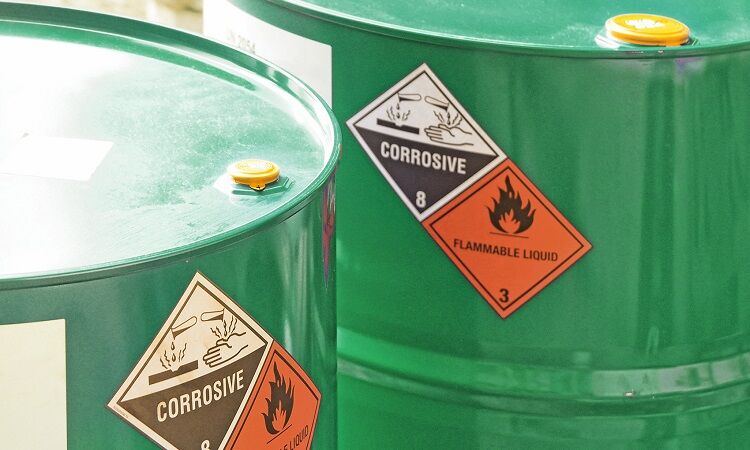Expert Liquid Waste Removal Melbourne: Keeping Your Environment Tidy
Expert Liquid Waste Removal Melbourne: Keeping Your Environment Tidy
Blog Article
Just How Liquid Waste Disposal Functions: A Thorough Review of Methods and Technologies Utilized

Introduction of Fluid Waste Kind
The complexity of liquid waste types necessitates a detailed understanding of their characteristics and effects for disposal. Fluid waste can broadly be classified right into several kinds, including industrial, community, agricultural, and unsafe waste. Each classification exhibits distinctive properties, requiring certain monitoring methods to mitigate ecological and wellness threats.
Industrial fluid waste originates from producing procedures and frequently contains a series of pollutants, such as heavy steels, solvents, and natural substances. Local liquid waste, primarily making up wastewater from homes and industrial establishments, includes raw material, nutrients, and virus (industrial wastewater treatment). Agricultural liquid waste, consisting of runoff from farms, may contain fertilizers, chemicals, and animal waste, posing threats to water high quality and ecological communities
Unsafe liquid waste is defined by its poisoning, reactivity, or potential to trigger harm. Comprehending these varied liquid waste types is important for creating reliable disposal methods and guaranteeing conformity with ecological laws.
Physical Treatment Methods

Testing is the initial action, where bigger particles and particles are gotten rid of from the liquid waste using displays or grates. In sedimentation containers, much heavier particles resolve at the bottom, forming a sludge layer, while the made clear liquid can be further dealt with.
Filtering is another important method that includes passing the liquid via permeable materials, such as sand or membrane layers, to catch smaller fragments. This step improves the high quality of the liquid, making it ideal for subsequent therapy processes.

Chemical Therapy Techniques
Chemical treatment strategies are essential for effectively taking care of fluid waste, especially in resolving liquified and colloidal contaminants that physical methods might not properly remove. These strategies utilize different chemical agents to counteract, precipitate, or change hazardous compounds right into much less damaging kinds.
One common technique is coagulation and flocculation, where chemicals such as alum or ferric chloride are contributed to advertise the aggregation of suspended fragments. This procedure enhances sedimentation, enabling for less complicated removal of the resulting sludge. Furthermore, oxidation procedures, using agents like chlorine or ozone, are employed to break down complicated natural substances and pathogens, rendering the waste much safer for discharge or additional therapy.
Neutralization is an additional crucial method, which changes the pH of acidic or alkaline waste streams to neutral degrees, protecting against potential harm to downstream systems and the atmosphere. Moreover, progressed oxidation procedures (AOPs) make use of mixes of oxidants and ultraviolet light to weaken relentless toxins, attaining a greater degree of therapy efficiency.
Organic Therapy Procedures
Organic therapy procedures play a crucial role in the management of liquid waste by utilizing microorganisms to break down raw material and decrease contaminant levels. These processes can be broadly classified right into cardio and anaerobic treatments, each employing specific microbial areas to attain reliable waste deterioration.
Cardiovascular treatment involves using oxygen to promote the failure of natural products by bacteria. This process is typically carried out in triggered sludge systems, where Get the facts aeration tanks supply a helpful atmosphere for microbial growth, leading to the oxidation of natural contaminants. The resultant biomass can be separated from dealt with effluent with sedimentation.
On the other hand, anaerobic therapy happens in the absence of oxygen, relying upon different microorganisms to damage down raw material. This technique is particularly useful for high-strength waste, as it produces biogas, a renewable resource source, while lowering sludge manufacturing. Technologies such as anaerobic digesters are frequently used in industrial and metropolitan applications.
Both anaerobic and aerobic organic therapies not only minimize the environmental influence of liquid waste but likewise promote resource recuperation, making them vital components of lasting waste management methods. Their effectiveness, performance, and adaptability support their extensive execution across various fields.
Emerging Technologies in Disposal
Ingenious strategies to liquid garbage disposal are rapidly progressing, driven by advancements in innovation and a raising focus on sustainability. Amongst these arising modern technologies, membrane layer bioreactors (MBRs) have acquired traction for their capability to incorporate organic therapy with membrane layer purification, causing top notch effluent that can be recycled in various applications. MBRs enable smaller impacts and more reliable operations contrasted to typical systems.
Another promising development is making use of anaerobic digestion combined with nutrient recovery technologies, which not only deals with fluid waste yet additionally creates biogas and recuperates useful nutrients like nitrogen and phosphorus. This double benefit improves resource efficiency and lowers ecological influence.
Furthermore, advanced oxidation processes (AOPs) are being adopted for the destruction of intricate natural contaminants. These methods make use of effective oxidants and drivers to break down contaminants at the molecular degree, using an extremely effective remedy for tough waste streams.
Additionally, the combination of expert system and maker knowing in waste administration systems is enhancing operational performance and predictive upkeep, causing decreased prices and enhanced environmental conformity. These innovations reflect a substantial shift in the direction of more reliable and sustainable fluid waste disposal practices.
Final Thought
In verdict, effective fluid waste Click This Link disposal demands a detailed understanding of various strategies and technologies. By continually advancing these methods, it comes to be possible to page deal with the growing difficulties linked with fluid waste, ultimately contributing to environmental protection and resource healing.
Liquid waste disposal is an essential aspect of environmental management, requiring an extensive understanding of different methods and innovations customized to various waste types. Liquid waste can extensively be categorized into several types, including industrial, municipal, agricultural, and hazardous waste. Agricultural liquid waste, consisting of drainage from ranches, might consist of fertilizers, pesticides, and animal waste, posing risks to water quality and ecosystems.
Various physical therapy approaches play an essential duty in taking care of fluid waste efficiently - industrial wastewater treatment.In final thought, effective fluid waste disposal demands a detailed understanding of different techniques and technologies
Report this page